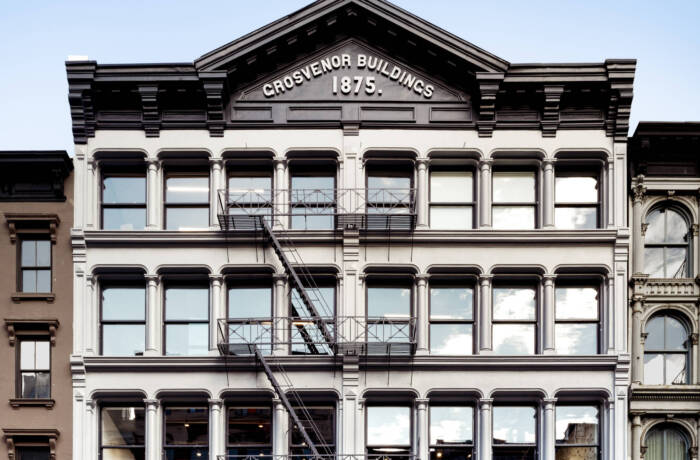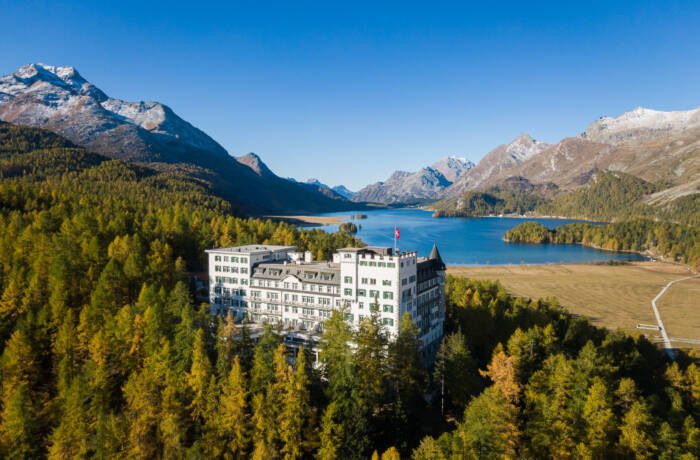
Works by Aiko Tezuka on display at Asia Now Paris in the Majhi International Art Residency booth
The Durjoy Bangladesh Foundation (DBF) continues its mission to bridge the art communities from the East and the West through the Majhi International Art Residency, this year taking place in Paris
The Majhi International Art Residency was started by DBF in 2019, with its first edition in Venice. Since then, the residency has taken place every year in different locations in Europe including Berlin, Eindhoven, Amsterdam at the renowned Rijksakademie, and now Paris.
Follow LUX on Instagram: luxthemagazine
This year’s two-week residency programme saw three artists from Asia and the Asian diaspora creating new works for an exhibition curated by Ricko Leung. Ricko Leung was born and raised in Hong Kong but has lived in Paris since 2014. Her art and curation focus on topics including, fear and control, cultural identity, and post-colonialism, as well as eco-feminism.
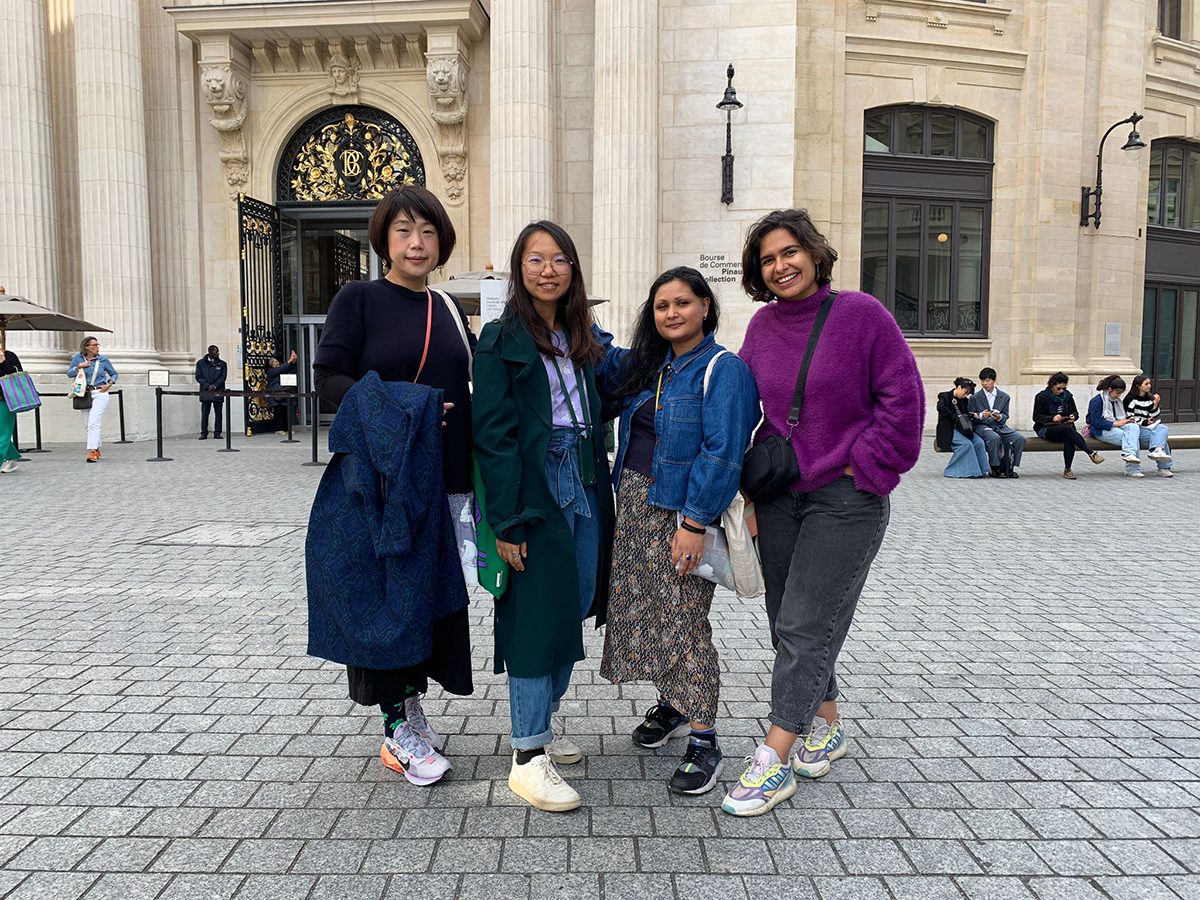
The artists and curator involved at the residency, left to right: Aiko Tezuka, Ricko Leung, Raisa Kabir and Rajyashri Goody
The theme of this exhibition was textile and indigo, in particular, around the history and meaning of indigo, being a material very closely tied to the colonial history of Bengal. Indigo is a material also used very frequently in the textile industry, which coincided with the focus of the venue partner, Asia Now Paris. The artists selected for the residency were Raisa Kabir, Aiko Tezuka and Rajyashri Goody.
Raisa Kabir is an artist, textiles researcher and weaver based in London. Kabir’s creations cover the interwoven cultural politics of cloth, archives of the body and colonial geographies, by using woven text and textiles, sound, video and performance.
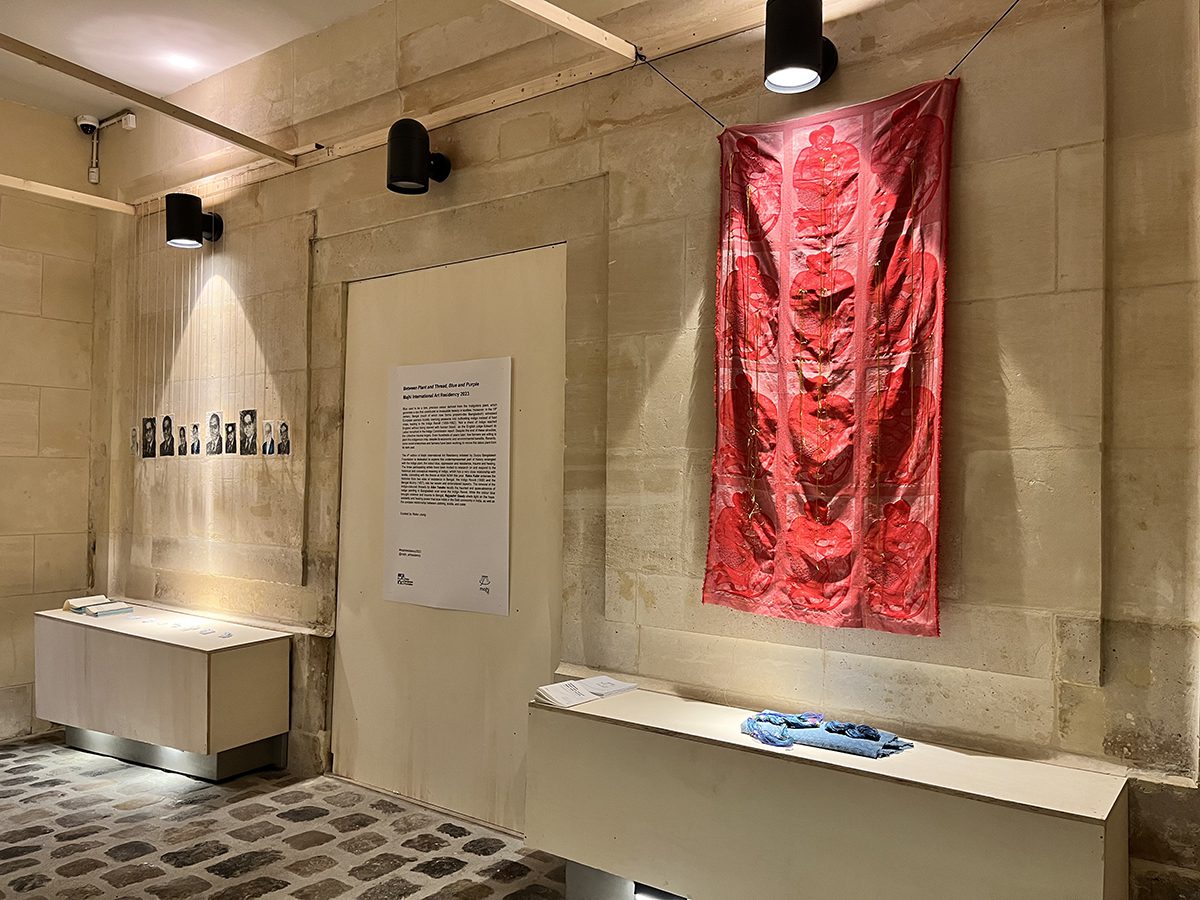
Works on display at Asia Now by Rajyashri Goody (right) and Raisa Kabir (left)
Kabir’s (un)weaving performances use queer entanglement to comment on structures of trans-national power, global production, and the relationships between craft and industrial labour. Her work speaks to cultural anxieties surrounding nationhood, textile identities and the cultivation of borders.
Aiko Tezuka was born in Tokyo but has lived in Berlin since 2011. Using different readymade fabrics Aiko produces unique works in which she unravels materials to create new structural forms using her own techniques.
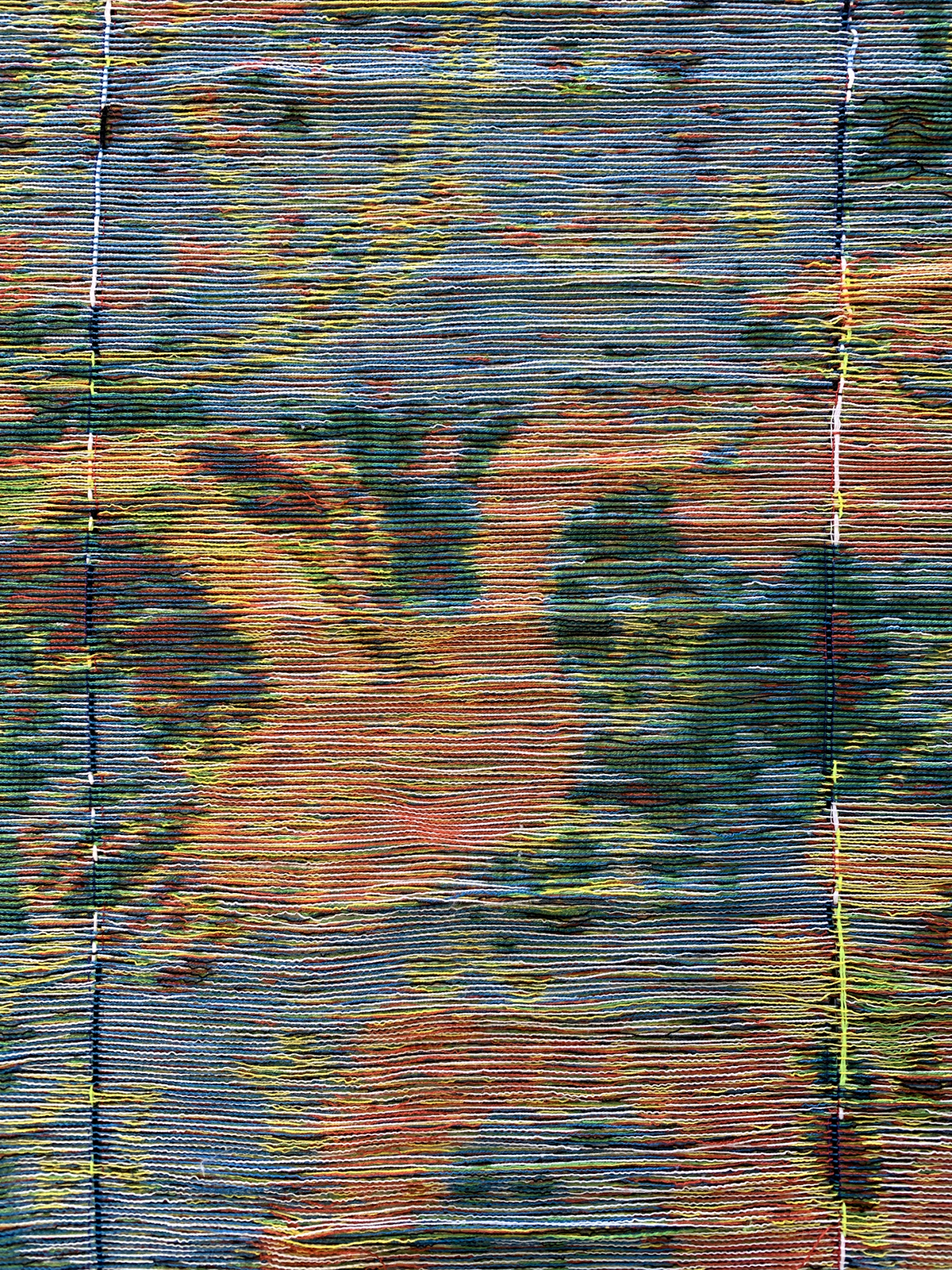
Details of an artwork by Aiko Tezuka
Rajyashri Goody is from Pune, India and currently works between India and the Netherlands. She was also a residency at the Rijksakademie in Amsterdam from 2021-2023. Goody’s practice has been heavily influenced by both her academic background and her Ambedkarite Dalit roots.
Read more: Mera Rubell on catalysing cultural change
She focuses on messaging around how basic needs of everyday life, including food, nature, language and literacy are actively used as tools to enforce caste rules for generations. She shows this messaging through various mediums incorporating text, voice, paper, pulp, ceramics, photography, printmaking, video and installation into her works.
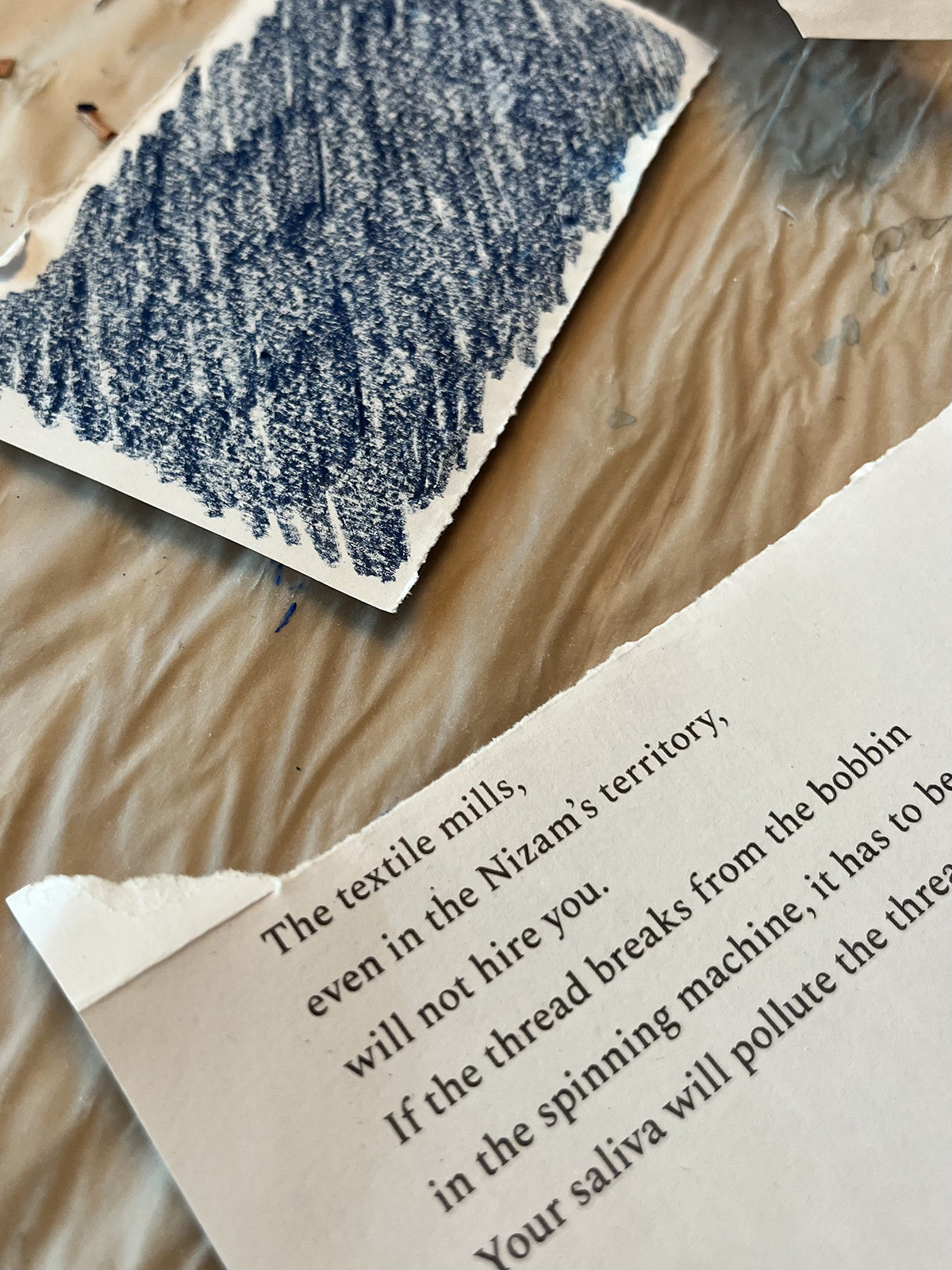
Indigo not only has strong ties with the colonial history of Bengal, but its pigment is extremely prominent in textiles, which was a point of focus at Asia Now
‘Majhi’ can be translated into English as a ‘leader’ of a house or group of people. In some ways, the Majhi International Art Residency programme acts as a leader by bridging divides, connecting individuals and creating a vibrant channel for the exchange of ideas and experiences.
Find out more: majhi.org

